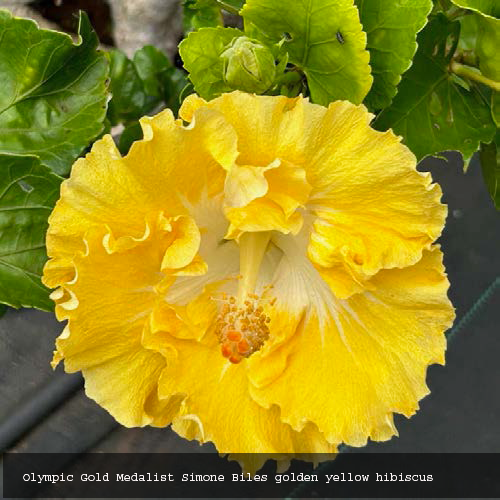By Penny E. Nakamura
Botanist Jill Coryell didn’t come into the hibiscus world in the normal route, but she says that the beautiful hibiscus saved her after a divorce and gave her a second career. Her botanical journey has brought her joy, and fame.
She’s affectionately known as the “Hibiscus Lady”, and her nursery is aptly named Hibiscus Lady Nursery.
As a retired United Airline flight attendant, Coryell, 77, earned her degrees at the University of Hawaii in Hawaiian studies and Pacific Anthropology, which sparked her interest into ethno-botany.
“Most hybrid hibiscuses today are descendants of the Native Hawaiian hibiscus, and Hawaii is the biggest hybridization of hibiscuses in the world,” said Coryell at her Waialua nursery. “I’ve learned from the best experts in the world how to hybridize seeds and keep records.”
The detailed records are imperative, as it takes about eight months for the first hibiscus blooms, and the flower usually last only a day or two.
“I’ve hybridized around twenty-thousand hibiscus in the last 25 years, and I’m quite snooty about what I decide to keep, which is only about 1 to 3% of them,” said Coryell, who updates her data base daily. “I have four data bases, I tag the lineage of the mother and father hibiscus, which allows me to search, and catalogue easily. I can search, for example, those that are blue in color, or what the size will be, or if it has a fragrance.”
Coryell’s blooms are registered with the International Hibiscus Society, which has also brought her worldwide recognition as the Hibiscus Lady. Her hibiscuses are in such demand that she is often contacted from botanical gardens around the world for some of her most exotic hibiscus blooms.
“If they’re coming from another country, I make them deal with the Agriculture Department, and they must come in person to buy my plants and deal with the paperwork, which can get very tedious and expensive, said Coryell. “I am certified by the Ag’ department to sell my hibiscus to some mainland states, and to keep that certification I must have a sterile nursery.”
We walk her two-acre nursery, where she has different plant stages of hibiscus growth, it’s a feast for the eyes as the plethora of colors are in full bloom.
Coryell stoops down to touch a flower, which she has named “September Mourning” to commemorate her fellow flight attendants that perished in the 9-11 attacks.
“This is truly an exquisite double; meaning it has two colors of bright pink and red with white stripes,” said Coryell. “It’s in remembrance of the beauty and courage of the lives of lost during 9-11.”
Coryell turns a corner and comes to a row of golden yellow hibiscus, which she created to honor Olympic Gold Medalist Simone Biles.
“I remember in 2016 watching this young gymnast who was doing the most amazing gymnastics I was mesmerized, so I contacted USA Gymnastics to ask if we could name this hibiscus after her,” said Coryell with a chuckle. “It took a few years, but she finally sent me an email and wrote that she would
be honored.”
Coryell has had the responsibility of rescuing some Hawaiian hibiscus species from extinction, including a rare coral-colored hibiscus that was originally taken out of Queen Liliuokalani’s garden, when her lady in waiting, was afraid it might be destroyed.
“These hibiscuses have brought me such joy, every day I get to see different flowers blooming,” said Coryell as she waves her hand over her nursery, and tenderly tends to a bloom as it starts to wilt.
As she gets older, Coryell says she would welcome amateur gardeners who would like to help at the nursery, as she would like to pass down some of her expertise to a new generation.



